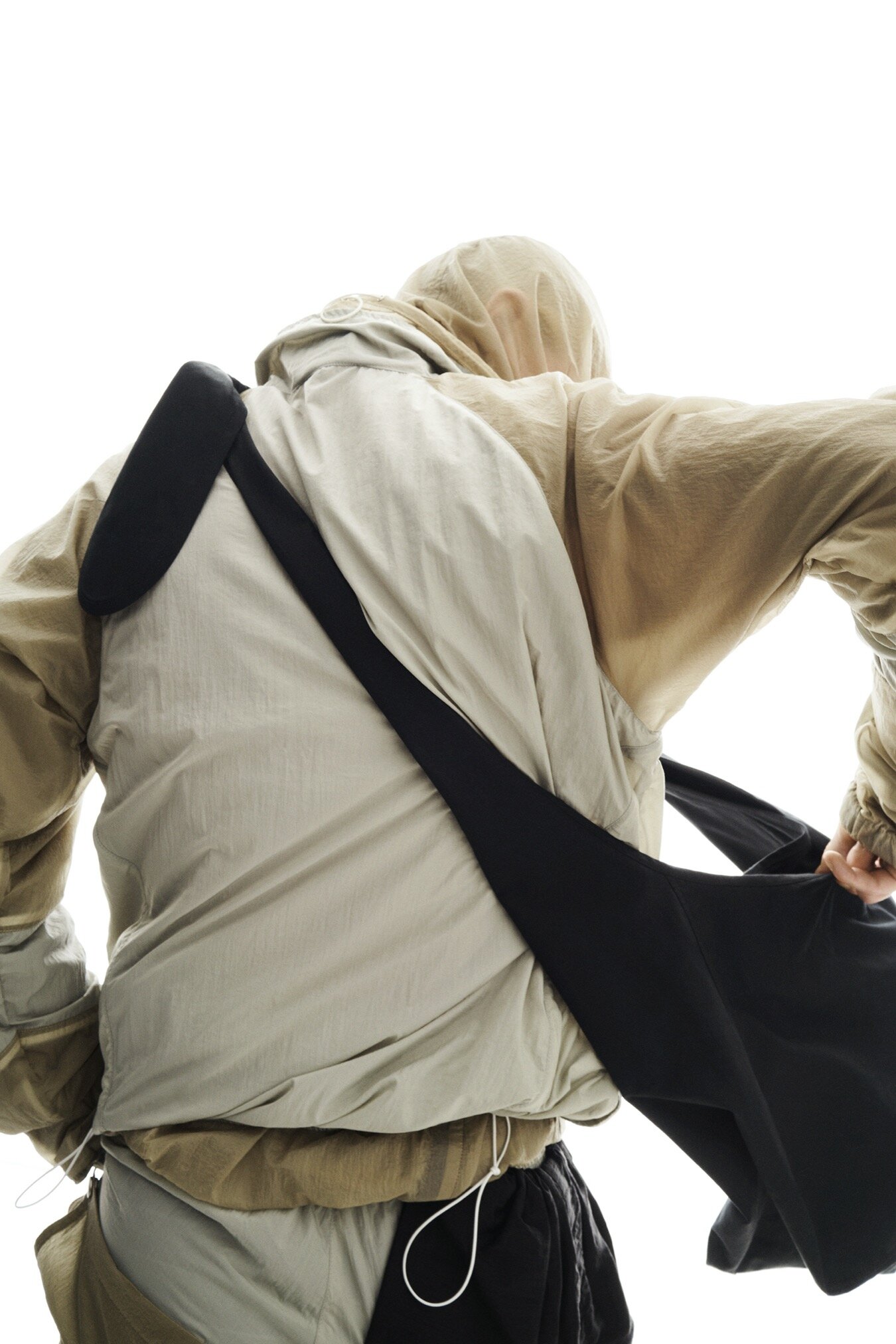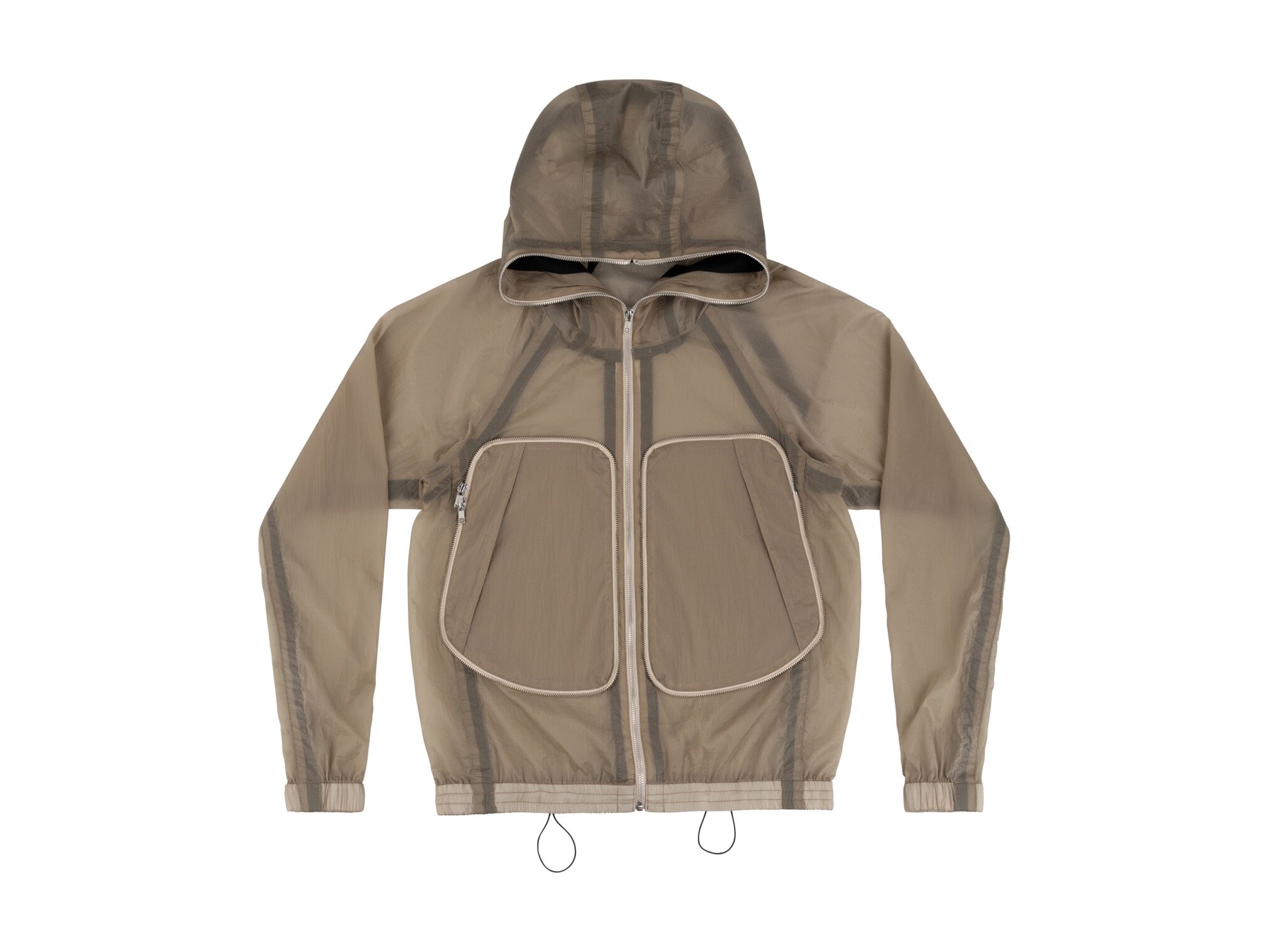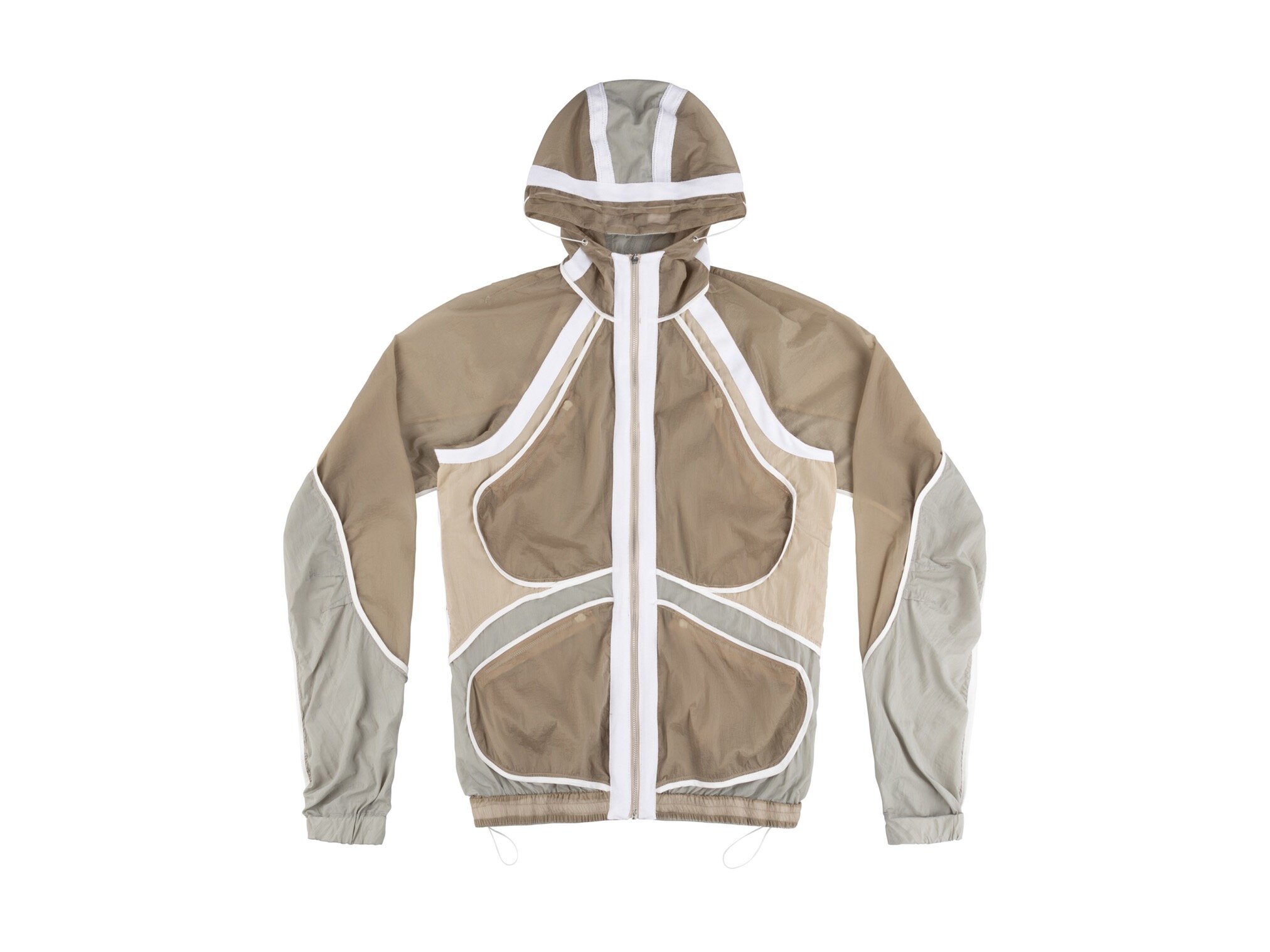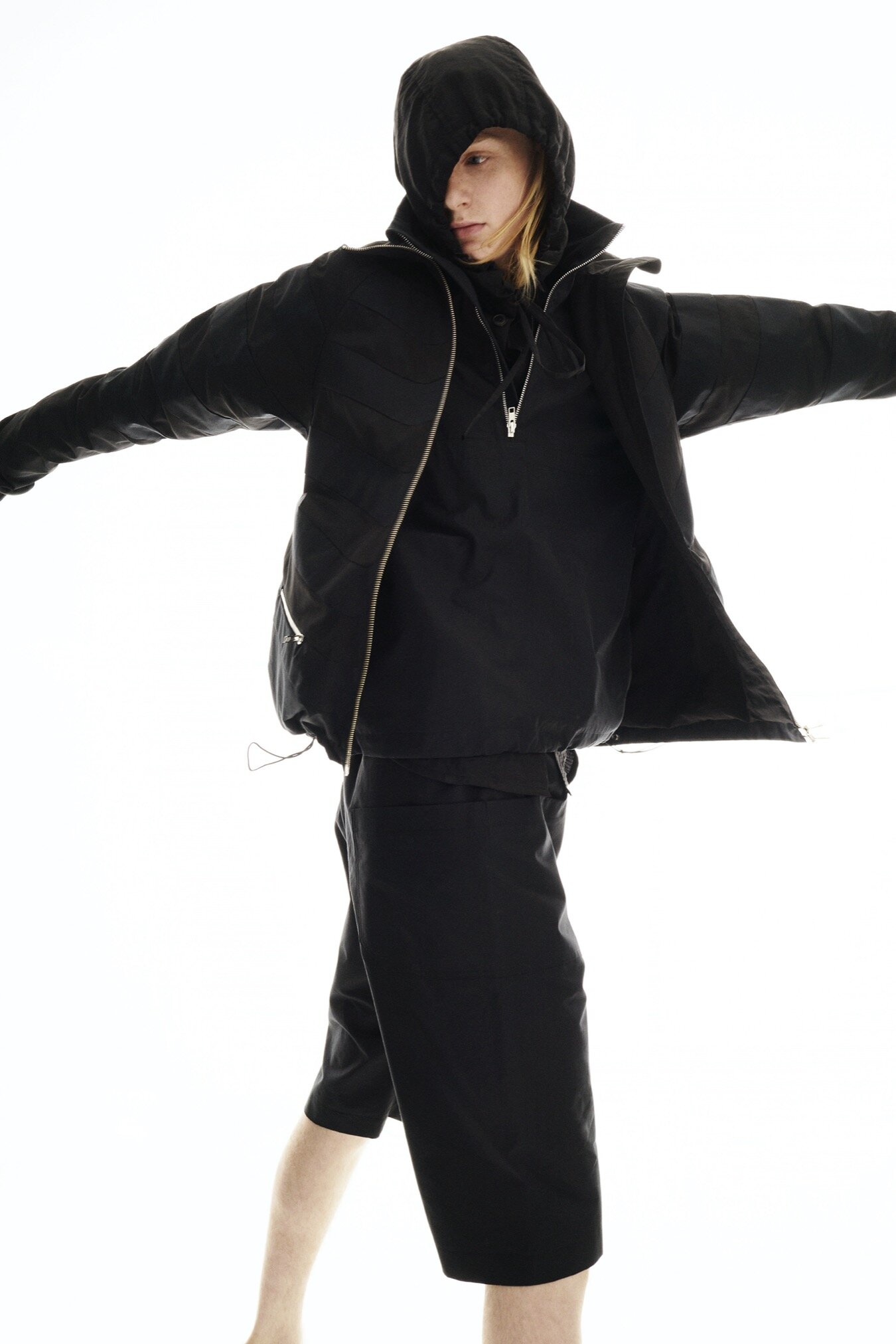Arnar Már Jónsson Weaves A Thread of Thoughtful Technical Wear

When the stiff, chilly wind hits the city full force, when the raindrop keeps on keeping on, our options to dress up and, at the same time, gearing up to face the outside world become suddenly limited.
A visit to the tailor in the pursuit of getting properly equipped to handle a muggy day will prove itself to be a quick shopping trip, with the Mac, and maybe an umbrella, being pretty much the only options. Which explains, in a way, the growing interest in technical fashion among the menswear and streetwear circles.
But what if there was, besides the occasional collaboration of a fashion house and an outerwear label [the latest being Gucci and The North Face’s announcement of an upcoming collab], a brand that would offer performance-oriented clothing that’s sharply tailored as well.
This is what Luke Stevens and Arnar Már Jónsson, the two creative minds behind the transitional outerwear brand named after Arnar — “because let’s be honest, his name sounds better”, Luke jokes — strive for. Ever since they first met at the Royal College of Art in London, they’ve been questioning what limits performance wear to mingle with traditional tailoring, and vice versa.
What comes out of this bond is a continual thread of conversation between the two designers and their friends and customers, about how we, as city dwellers, can incorporate functionality into our everyday outfit. And yet, more than anything, the duo aims to build a tight-knit array of utilitarian attires, as well as tweaked and refined versions of traditional menswear pieces such as the classic shirt or knits, that aren’t just made for the sake of a seasonal trend, but rather for the long run.
We caught up with both Luke and Arnar to find out more about their sustainable, thoughtful design approach and inspirations.
First off, how did you guys meet?
Arnar Már Jónsson - Both having gone to and met at RCA, we realised we had a lot in common in terms of what we were trying to achieve. Back then, I was also doing some fittings for Luke’s projects.
Luke Stevens - That’s right, I had a few things going on before we really started what we’re doing now. A few days after I left college I presented my graduate collection at Fashion East’s MAN. Then I did a few other projects, some were architecture-related. But after a year or so, I wanted to explore making fashion again. From there we got together to experiment and see how we would go about working as a duo.
Arnar - That’s when we made a range of carrying bags out of sleeping bags. Their whole structures were weaved from cutout pieces of the insulated blankets. It’s been an exercise in learning to combine our two visions into one.
Luke - And then, naturally, this collaborative work grew into a proclivity for making techwear for both the city and the great outdoors.
Arnar, how’s your homeland Iceland influencing you both? Likewise Luke, coming from London, how does your vision of fashion chips in?
Arnar - Being used to the Icelandic cold front, it’s always been important for me to make something that could make it through challenging weather conditions. While Luke himself is used to the sporadic rain that every Londoner must eventually face. So in that sense, functionality became central to our designs.
Luke - To add to that, most staples in menswear haven’t changed in a long time. Say the Harrington jacket. The core of its construction remains pretty much the same since it was introduced, and that’s almost three quarters of a century ago. Yet, interestingly enough, the same single-minded design approach goes for the sportswear scene. It’s purely about the element of performance, and nothing else. We’re interested in seeing how the two can be brought closer together.
Can you clarify your roles? As a team, how do you go on making a collection?
Luke - We both do everything, really. From season to season, we’ll pass the tasks back and forth between us. Everything’s an ongoing conversation.
Arnar - Each season we focus on just a thing or two that we think is missing from our work. Then we’ll go on working on a garment at a time, making sure we nail it. For the first two seasons, we’ve basically been building a foundation of a few pieces that now make recurrent apparitions in our collections.
How do you do the fittings? Tell us more about the process of making a piece of clothing of yours.
Arnar - We design from our own pattern blocks and the way we conceptualise them is through wear-tests. Basically, we wear the stuff we make for months and in doing so, we get to intrinsically understand and connect with the garment and eventually become aware of what needs to be fixed or improved.
Luke - Our friends and customers let us know how their wearing experience has been, too.
What is it that makes your clothes technical? Can you walk us through some technical elements of your designs?
Arnar - Every part of our designs are well thought through and have a purpose. For a start, our jackets are made from Ventile® cotton (and some mixed with polyester) and built to handle whatever the weather may throw up. It’s been used by the military, tested on Mt. Everest, etc. And so the jackets are fully showerproof, windproof and breathable. If teamed up with a thermal or wool base layer, they’ll do just fine during the coldest days.
Luke - If we look at our shirts, the latest collection features a long sleeve button-down of which its collar seemingly looks regular, like a typical dress shirt collar, though it can be rolled out into a hood and then folded back again. The classic white shirt we made is made from Ventile® cotton, too, and hence is geared up to deal with unexpected weather as well.
Yet as much as your designs are highly functional, they blend in well with most clothes from the streetwear spectrum. What inspires you aesthetically speaking, and how do you juggle between performance and appearance when it comes to designing?
Luke - We’re challenging what we’re used to seeing in sportswear. Our approach to functional design is vigorous but not too strict, for you can see the craft that’s behind it. Sometimes on a piece the seams might be a tad rougher at spots, just the way the seamstress have made it. It’s a bit of a nod to the military look. At other times we’ll be overdyeing the fabric we work with so that it looks as if it’s been worn before, as if it’s been through the mountains already.
Arnar - It’s the human touch that’s so often missing in the design approaches of outerwear— ours is a bit more nuanced. The technical nature of our work remains very much in force, only that it has a folky twist to it. It’s a poetic take on functionality, if we may dub it this way.
Luke - As for the aesthetics, there are elements that are drawn from the 1960s, when there was a fixation on a distant utopian future world, with the cyborgs and everything. Yet our take is slightly more optimistic than what was portrayed back then. The decade that followed, with its flourishing environmental movement, inspires us and motivates us to make clothes that will live beyond the current season.
With four collections under your belt, there seem to be recurrent pieces in each of them. Tell us more about that continuity in your work.
Arnar - Our collections are solely based on the conviction to make proper outerwear pieces designed for both nature and the urban environments, and that’s that. It’s a constant conversation about how we can improve our designs and ensure the stuff we make doesn’t become just another passing trend. In that sense we revisit what’s been done, ask our friends and customers how they liked their acquisition, how they disliked it, etc., etc.
Luke - And through time, not only does this highly-detail oriented work get more focused, it becomes more subtle, more empathetic to its owner. Once they get familiar with their new purchase, the wearer might find out some details they didn’t even realise were there when they first bought it, from the way it sits on the shoulders to the way it breathes evenly.
In addition to that ever-evolving process, what’s your take on sustainability?
Luke - We try to approach sustainability in a creative way through our designs. For instance, the Ventile® cotton we work with is so dense it’d take a lot for it to rip. What’s more, most pieces have an element of adaptability. Some of them have a plaid pattern as lining, so they can be worn inside out. That way a single piece can make two different looks.
Arnar - And this season, we’ve introduced a tracktop that has a detachable zipper pocket, and the pocket itself can be zipped into a carrying bag. No need to get plastic bags at the shops anymore, no more excuses.
Moving forward, is there something that you want to explore further?
Besides blurring the lines of possibility of active wear and to expand how and where we choose to wear it, not much. It’s an ongoing research project, and there still is so much more to be explored and done.
Thank you a lot for your time!
About the author:
Michaël is a freelance writer from Montréal who currently lives in London. His work has appeared in i-D Magazine and 1Granary and covered the subjects of sustainability, climate justice and the resurgence of indigenous self-esteem.































